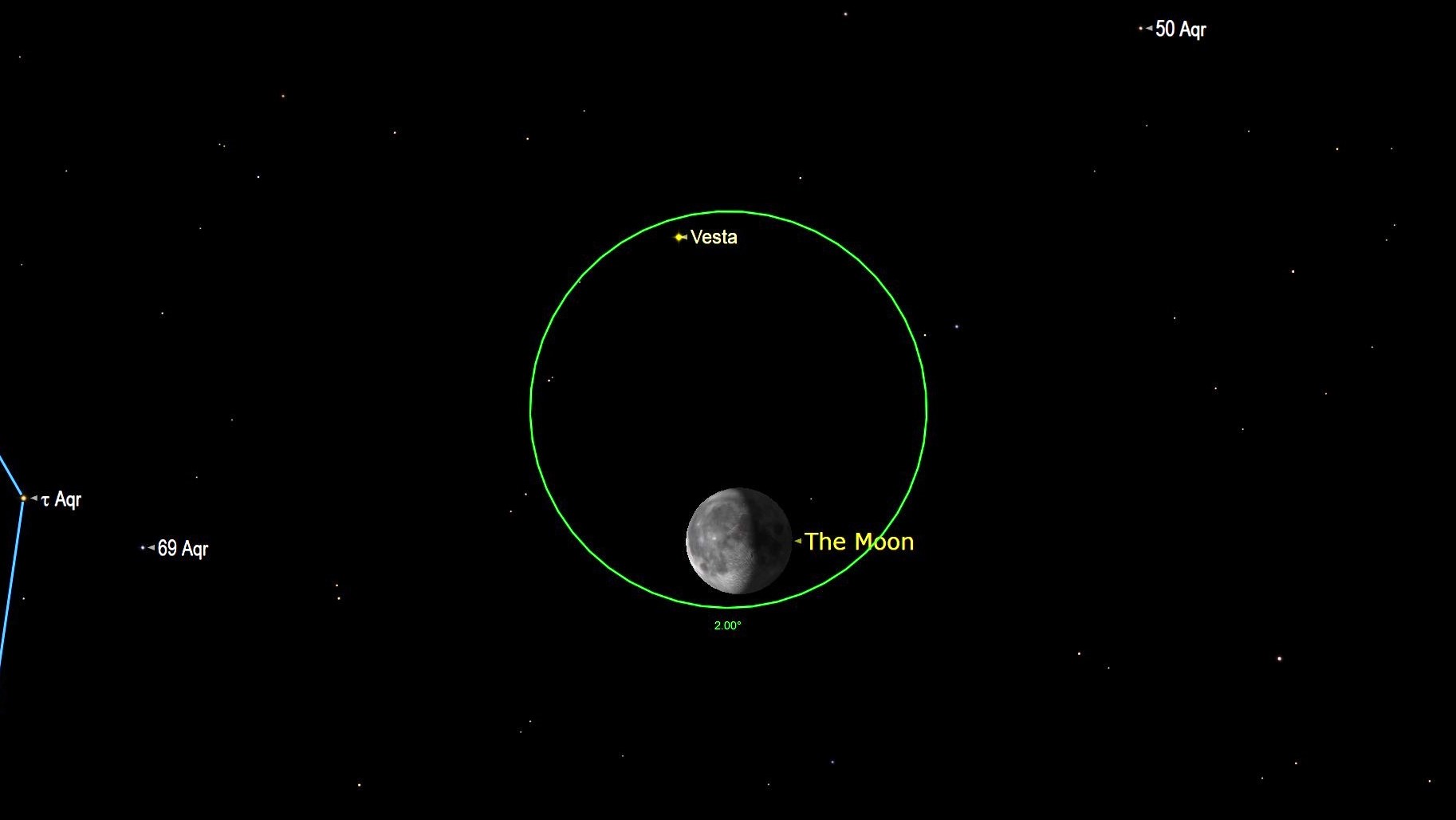Look up! See the moon shine near massive asteroid Vesta this weekend.
The pair will be visible to observers using a widefield telescope eyepiece.

In the early hours of Sunday morning (June 19) the waning moon will pass within a thumbs width of asteroid Vesta in the east-southeastern sky.
During this close approach, the pair will share the view in a widefield telescope eyepiece, according to Chris Vaughan, amateur astronomer with SkySafari Software who oversees Space.com's Night Sky calendar. Shining at magnitude 6.75, Vesta will be visible to the moon's upper left.
"The diurnal rotation of the sky will lift Vesta above the moon by 4 a.m," said Vaughan. Observers in most of Antarctica, the tip of South America, and the Falkland Islands can see the moon occult Vesta around 08:00 GMT."
Related: The brightest planets in June's night sky: How to see them (and when)

Looking for a telescope for the next planet sight or skywatching event? We recommend the Celestron Astro Fi 102 as the top pick in our best beginner's telescope guide.
The exact time of the event varies depending on your specific location, so you'll want to check out a skywatching app like SkySafari or software like Starry Night to confirm the local time to look up. Our picks for the best stargazing apps may help you with your planning.
Vesta is the brightest asteroid in the sky and is occasionally visible from Earth with the naked eye. It is the second-largest body in the asteroid belt, surpassed only by Ceres, which is classified as a dwarf planet.
Hoping to snap a good photo of the moon as it approaches Vesta? Our guide on how to photograph the moon has some helpful tips. If you're looking for a camera, here's our overview of the best cameras for astrophotography and best lenses for astrophotography. As always, our guides for the best telescopes and best binoculars can help you prepare for the next great skywatching event.
Get the Space.com Newsletter
Breaking space news, the latest updates on rocket launches, skywatching events and more!
The close approach of the moon and Vesta isn't the only skywatching event to look out for this month. Throughout June, a rare "planet parade" will be visible in the predawn sky as all five naked-eye planets line up in their orbital order from the sun. From left to right in the southeastern sky, you'll be able to spot Mercury, Venus, Mars, Jupiter and Saturn all in a row. (Mercury will become easier to spot as the month matures.)
The best opportunity to see this spectacle may come on June 24, as Mercury should rise about an hour before the sun, according to a press release from Sky&Telescope.
Throughout June, the moon will journey past the planets in the morning sky. On June 21, it will pass Jupiter, then it will journey past Mars on June 22 and Venus on June 26, finishing its tour with Mercury on June 27.
Editor's Note: If you capture a great photo of the moon and Vesta would like to share it with Space.com's readers, send your photo(s), comments, and your name and location to spacephotos@space.com.
Follow us on Twitter @Spacedotcom and on Facebook.
Join our Space Forums to keep talking space on the latest missions, night sky and more! And if you have a news tip, correction or comment, let us know at: community@space.com.

Daisy Dobrijevic joined Space.com in February 2022 having previously worked for our sister publication All About Space magazine as a staff writer. Before joining us, Daisy completed an editorial internship with the BBC Sky at Night Magazine and worked at the National Space Centre in Leicester, U.K., where she enjoyed communicating space science to the public. In 2021, Daisy completed a PhD in plant physiology and also holds a Master's in Environmental Science, she is currently based in Nottingham, U.K. Daisy is passionate about all things space, with a penchant for solar activity and space weather. She has a strong interest in astrotourism and loves nothing more than a good northern lights chase!









